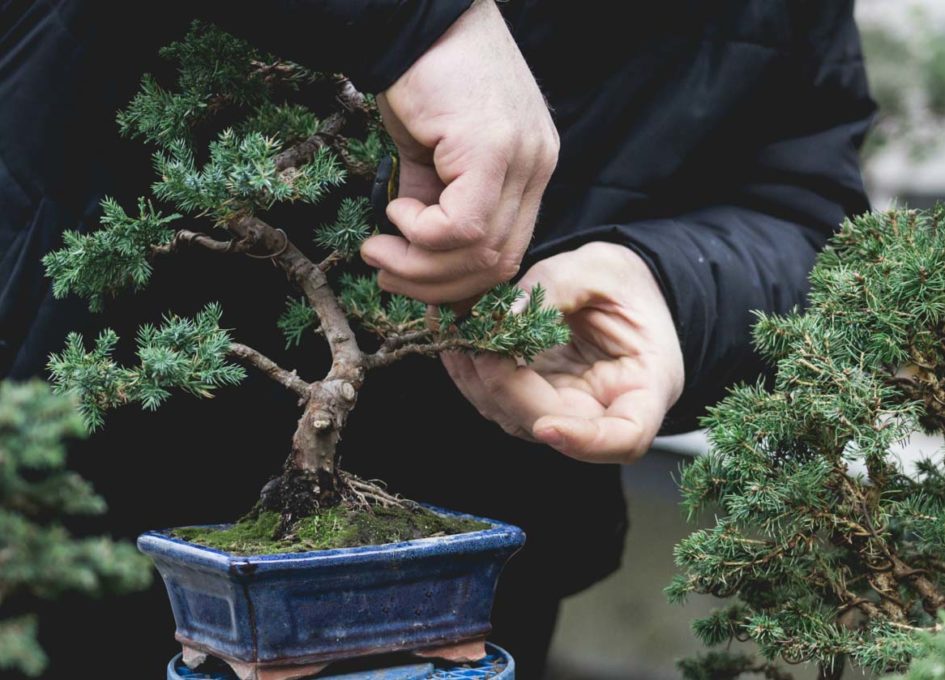Main branches
There are several rules for cutting branches that may hinder the future bonsai shape. The images show the likely arrangement of the branches and indicate which branches should be cut:

- Only one of the branches grown from a single point should be left. The branch on the front, which is directed straight towards the observer, should be cut.

- A bent branch that crosses the trunk of the tree in the front view.

- Only one of the branches that are closely arranged on top of each other should remain.

- Branches located on opposite sides should not grow from the same level. In such cases, one of them should be pruned.

- All small branches between the primary branches should be pruned.

- When cutting thick branches, another nuance to consider is that if the tree trunk is curved, the primary branch should grow outward from the convex side of the curve.
To better imagine how to choose the arrangement and number of branches, let’s consider the CHOKAN style.
The branches on the lower 1/3 of the entire height are completely removed. The branches on the opposite side do not grow from the same level; the nearest branch to the base is the thickest and longest. Each subsequent branch is placed slightly above and opposite to the previous one and is shorter than the one in front. The crown and base of the tree are aligned on the same vertical line. It is preferable for the bonsai to have two or three branches on the back, creating a spatial illusion. The lower branches should be angled down, just like the older trees in nature.


Secondary branches
Only the main large branches that are essential for the future bonsai remain on the plant. After this, we begin trimming the second-tier branches. Each second-tier branch should be shortened to the desired size and given a shape that fits the particular style. There are also certain rules that should be followed to ensure proper bonsai shaping. First, all branches that are clearly pointing up or down should be cut off.

If the second-tier branches are tangled, you should carefully decide which one to keep, and trim the rest. To make the bonsai trunk visible, you should cut off every second-tier branch that grows close to the trunk on the large branches located at the bottom part.

If we observe the picture, we can see that the second-tier branches should also be arranged on the main branch according to a certain principle. At the tip of the branch, there are only a few leaves and buds. Their number and length gradually increase towards the trunk of the tree. It is preferable that the branches on opposite sides of the tree be arranged alternately in distance from the trunk: if the closest branch to the trunk is on the left side, the next one should grow on the right side, slightly further away, and so on. If the main branch is bent, the second-tier branch should grow outward from the bending point.

